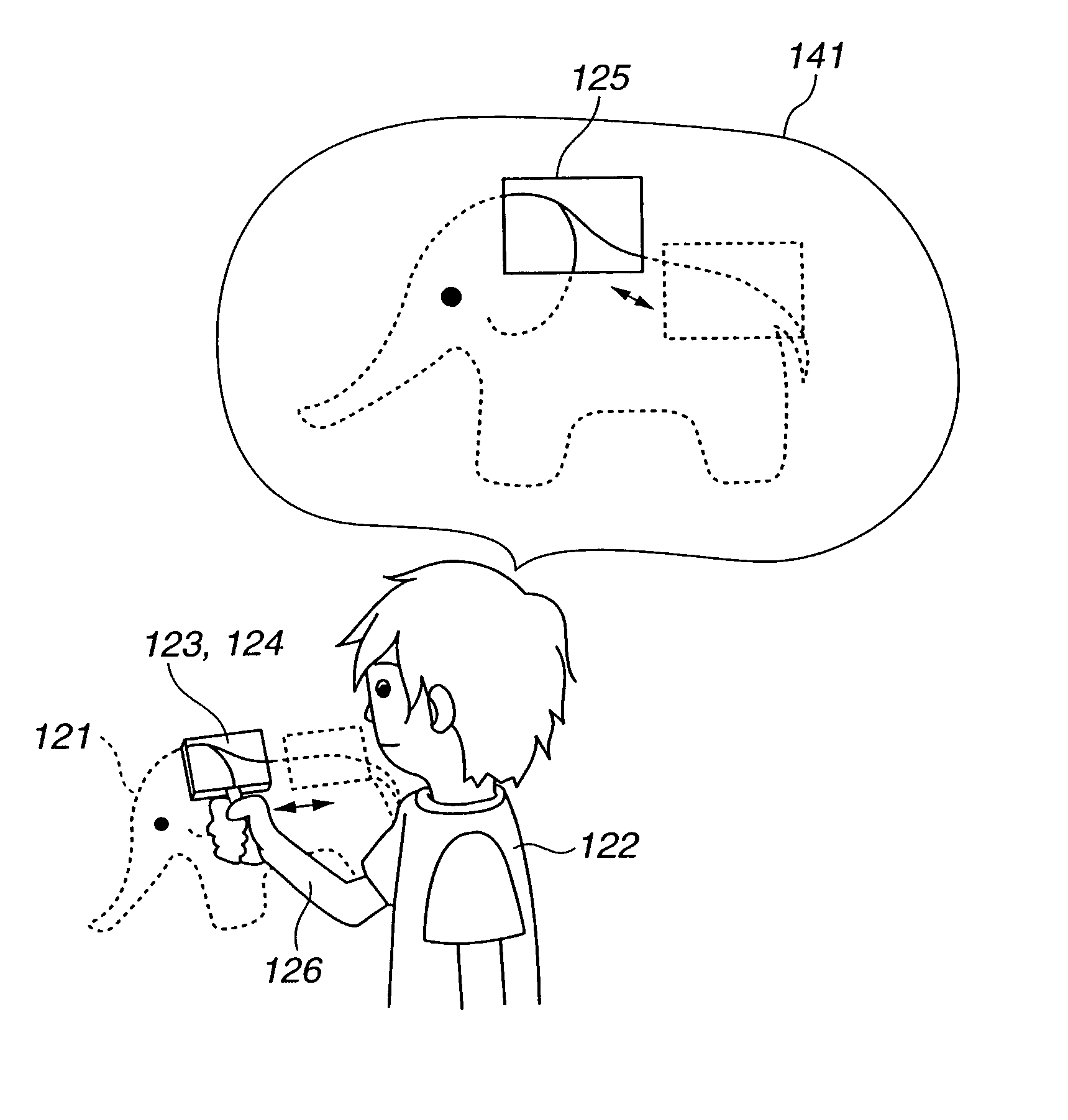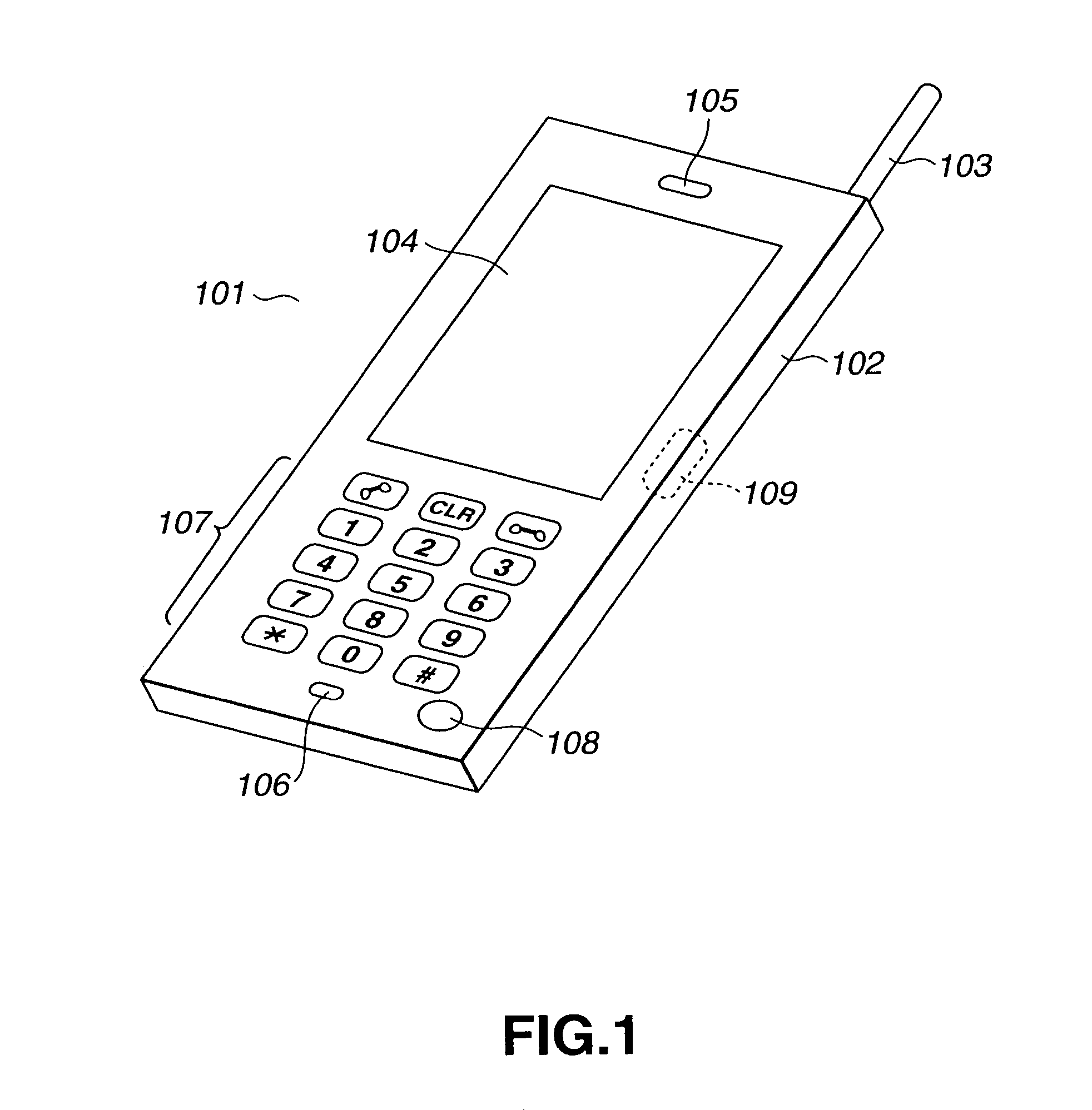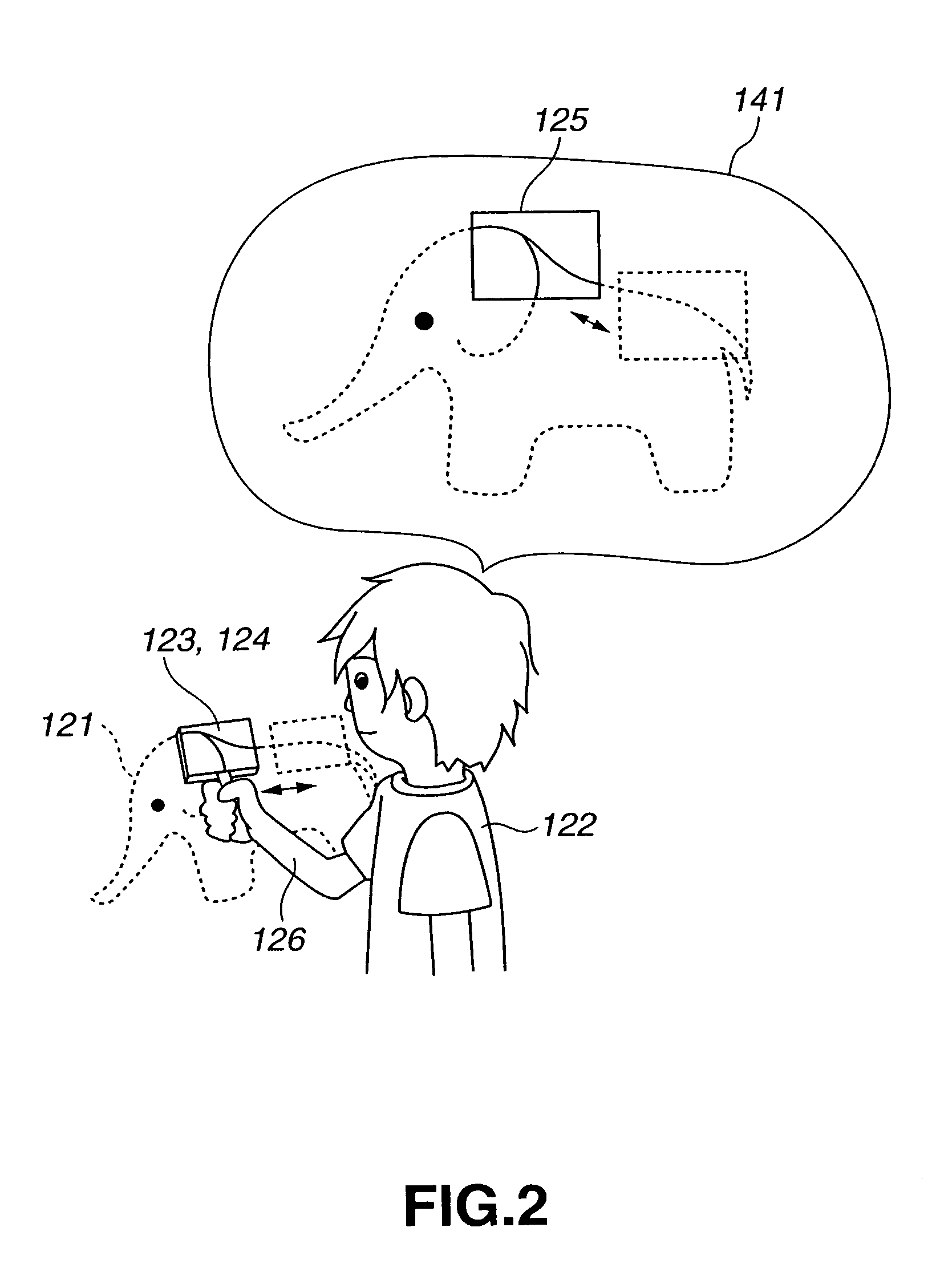Image information displaying device
a technology of information display and image information, which is applied in the direction of static indicating devices, instruments, optical elements, etc., can solve the problems of impaired value of information displayed, inability to demonstrate images of a large capacity at a time, and unable to comprehend the entire structur
- Summary
- Abstract
- Description
- Claims
- Application Information
AI Technical Summary
Benefits of technology
Problems solved by technology
Method used
Image
Examples
embodiment
[0054]A first embodiment of the present invention is now explained.
[0055]FIG. 1 shows an appearance of an image information displaying apparatus of the present first embodiment. This image information displaying apparatus of the portable telephone set type 101 includes a main body unit 102, as a casing, on an upper end of which is mounted an extensible antenna 103. On the front surface of the main body unit 102 of the apparatus is mounted a liquid crystal display 104 as a display unit. On the uppermost and lowermost portions of the front surface of the main body unit 102 are mounted a loudspeaker 105 and a microphone 106, respectively. An operating unit 107, composed of various button switches, is mounted between the liquid crystal display 104 and the microphone 106. A mode changeover switch 108 is mounted below the operating unit 107. This mode changeover switch 108 is used for a specified case of shifting an image of a large size, for example, as will be explained in detail subseq...
PUM
 Login to View More
Login to View More Abstract
Description
Claims
Application Information
 Login to View More
Login to View More - R&D
- Intellectual Property
- Life Sciences
- Materials
- Tech Scout
- Unparalleled Data Quality
- Higher Quality Content
- 60% Fewer Hallucinations
Browse by: Latest US Patents, China's latest patents, Technical Efficacy Thesaurus, Application Domain, Technology Topic, Popular Technical Reports.
© 2025 PatSnap. All rights reserved.Legal|Privacy policy|Modern Slavery Act Transparency Statement|Sitemap|About US| Contact US: help@patsnap.com



